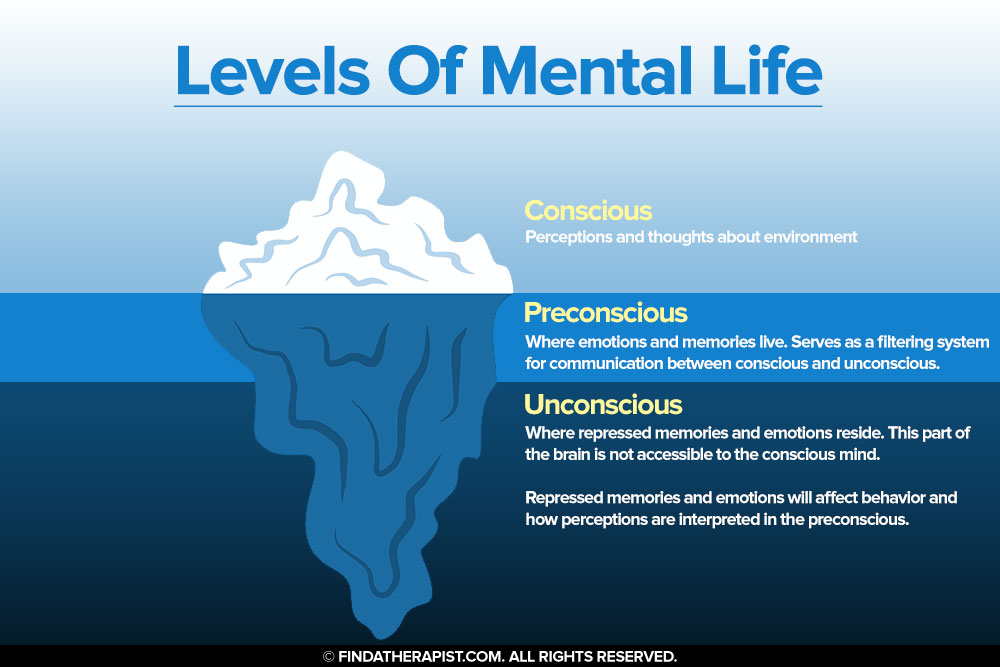Defense Mechanisms
Published on December 2nd, 2019
Updated on January 2nd, 2024

Contents
Defense mechanisms are methods people use to defend themselves. According to Dr. Sigmund Freud, people use defense mechanisms as a defense against stressful situations.
Sigmund Freud is the founder of psychoanalysis. Psychoanalysis is a therapeutic approach that explores the unconscious mind. Freud’s work with his theory contributed greatly to modern day therapy and psychology. Among his most influential theories is the use of defense mechanisms.
Sponsored by

Choose a therapist to work with and start healing with 20% off from BetterHelp.
Click Here
Are Defense Mechanisms Harmful?
Use of defense mechanisms is normal- everyone does it from time to time. Sometimes, when a defense mechanism is used to often or incorrectly, it can cause harm.
The situations in which a defense mechanism can cause harm include:
- Compulsive use
- Repetitive use
- Neurotic use
This article outlines and explains Sigmund Freud’s developed defense mechanisms. The following mechanisms are those that he was able to identify through the work with his patients.
Repression
Repression is a defense mechanism. It forces thoughts, feelings and impulses into the unconscious mind. Freud believed that people repress unwanted or uncomfortable thoughts, feelings and impulses into the unconscious. They do so as a means to cope.
When a person engages in repression, there are different reactions that may occur. The affected person may feel anxious while working to repress the uncomfortable impulse. They may struggle to keep the unwanted impulse in the unconscious, as it tries to make its way to the conscious mind.
Repression Example: Sally suffered from severe abuse during her childhood. Her father badly beat her on a daily basis. As an adult, Sally struggles to recall memories of the abuse.
She does not remember the events of the abuse, but does struggle with forming meaningful relationships with others. Sally has difficulty with trusting others. She constantly feels fearful of people hurting her.

Reaction Formation
Sometimes a repressed impulse can be disguised to reach the conscious mind. This occurrence is called reaction formation. Reaction formation disguises repressed thoughts, feelings and impulses. They do so by making them appear as the exact opposite of what they are. It causes the exact opposite of the repressed impulse to become conscious and realized by the affected person.
When reaction formation is successfully completed, the affected person believes the opposite. They behave and think according to the opposite of their initial impulse. This often causes anxiety for the affected person, as the opposite continues to disguise the true thought, feeling or impulse.
Reaction Formation Example: A homosexual person may feel shame or guilt for their sexuality. As a result of reaction formation, that person will act out in heterosexual ways. They may date and enter relationships with the opposite sex. They may express sexual interest in the opposite sex, and may even express feelings of homophobia.
Displacement
Displacement also brings repressed thoughts, feelings and impulses to the conscious. It redirects the impulse onto a less threatening target. There is a level of deception that takes place with deception, but it is in the redirection of aggression. The aggression that is caused by the repressed impulse is redirected onto a target that is safer, or poses less of a threat.
Displacement Example: A great example of how displacement works is often found in bullies. Bullies often have a reason why they became bullies. It is not uncommon for a bully to also be a victim of violence or abuse at home.
The bully may be helpless against an abusive parent. Since they cannot take their aggression out on their abusive parent, they take it out on other children. Classmates and peers are less threatening than an abuser, so they pose as a safe outlet for anger, aggression and other negative impulses.
Fixation
When we are young, we learn habits that bring us comfort. Habits like sleeping, thumb sucking, or hiding under the covers all helped us cope with our first stressors. Sometimes, when we are overwhelmed with anxiety, we will revert back to these habits. This process is called fixation. It occurs when a person is so overwhelmed by a challenge that they revert back to infantile methods of coping. These infantile methods may stay the same from childhood or change in a minor way.
Fixation causes a person to become aware of the present moment. If they stay focused on the present, they do not have to face the challenges they are confronted with. The sensation of the coping habit reduces anxiety, so the challenge feels less overwhelming.
Fixation Example: Fixations do not always stay the same from infancy. A great example of this is the coping habit of thumb sucking. Thumb sucking is often seen in children. It is done as a means to self-soothe.
As a child develops into adulthood, thumb sucking is no longer socially acceptable. That does not mean the fixation has disappeared in adulthood, though. It may still be present, just different. Nail biting, chewing on pencil erasers, smoking or stress eating are all examples of how a person may use fixation to reduce stress.
Regression
Regression occurs when a person engages in behaviors that occur during an earlier stage of development. One will most likely see regression occur in times of distress or extreme anxiety. When a person regresses to an earlier stage of development, is is usually a temporary means to cope with distress. However, there are cases in which a person regresses back into an earlier stage of life and is not able to bounce back to their most mature state.
Regression Example: A common example of when a person will use regression to cope is moving back in with their parents. Sometimes life causes people so much stress that they need to return home in order to recover and heal.
Parents tend to be a source of support and comfort. They can provide financial support, shelter, guidance and nurturing. If a person goes through severe emotional, physical or financial distress, they may return temporarily to recover. This would become problematic if the affected person does not take steps to leave their parents’ home after healing.
Projection
People often project their negative internal thoughts and feelings onto external people and objects. When a person is having self-defeating thoughts about themselves, they may project their discontent onto the people, animals or institutions around them. With projection, they direct their attention away from themselves. It serves as a form of distraction or denial about their own thoughts and feelings about themselves.
Such acts of projection may include:
- Lashing out at family
- Becoming aggressive with other people and/or objects
- Having a short temper
- Becoming unreasonably angry or resentful of things that do not directly affect them
- Acting overly critical about others
Projection Example: A prime example of projection is when a person is very critical of others. When a person is habitually critical of others, it often means that they are projecting what they do not like onto themselves onto the people around them.
Some people may project onto anyone in their lives. Others may have one or a few specific targets for their projection. Either way, the affected person is working to not have to think about their repressed impulses. They instead deflect the attention off of them and onto other people.
Introjection
Introjection is a defense mechanism that helps to keep insecurities from affecting a person. When a person uses introjection, they will adopt qualities from others that they see as desirable. Qualities may be modeled from others, or expressed as desirable from others. A person is using introjection if they behave in a way others express is positive.
A person adopts qualities from other people to compensate for their own inferiorities. Adopting these qualities causes a person to feel an inflated sense of self-esteem. It can be helpful if utilized in moderation, but if used too much, introjection (like any defense mechanism) can become harmful.
Introjection Example: An example of introjection can come from a person modifying their own lifestyle to appear or become a certain way. If a person hears that all successful people are able to keep a clean home, they will work hard to keep a clean home. They will do so to emulate the qualities of a successful person.
Sublimation
Sublimation reflects on a person’s social culture. It combines personal pleasures with social and cultural norms to promote positive behaviors. A person using sublimation will take their negative energy to fuel positive behaviors. They will strive to create positive energy for the society. In effect, they take negative, angry or aggressive energy and turn it into something constructive.
Sublimation Example: A person who is upset with the garbage that is left around their workplace has the choice to get angry and lash out at others. They know that his kind of energy will only turn people off to listening to them.
Instead of acting out in anger, they channel that energy into finding a solution. The affected person decides to purchase garbage cans for each corner of their building. They do so to encourage people to throw garbage in the trash, rather than on the ground.

Sponsored by

Find an affordable therapist online with 20% off from BetterHelp.
Click Here






Leave A Reply